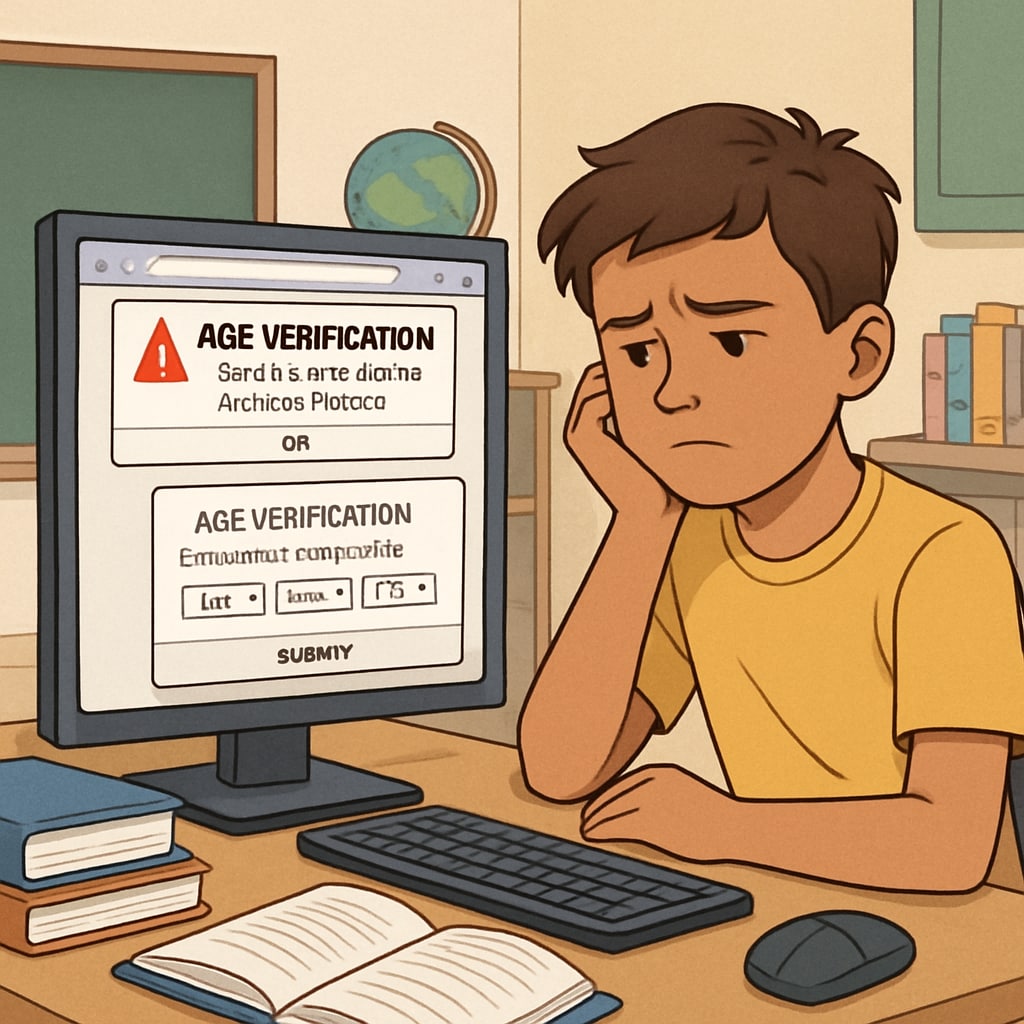In recent years, the implementation of strict age verification laws for online content has gained traction across multiple U.S. states. These laws aim to shield minors from inappropriate material by requiring platforms to verify users’ ages before granting access. However, this regulatory framework introduces significant challenges for K12 education. Balancing the legal responsibility of content moderation with students’ right to access vital educational resources is a pressing issue. The potential impact of these restrictions on the holistic development of the next generation warrants serious attention.
Understanding the Age Verification Laws and Their Scope
Age verification laws are designed to create a safer online environment for children, particularly by limiting their exposure to harmful or explicit content. These measures often require platforms to implement advanced verification technologies, such as government-issued ID checks or AI-based identity systems. While the intention is noble, the execution raises questions about privacy, accessibility, and the unintended consequences for educational resources.
For instance, many websites hosting educational content—ranging from biology research papers to historical archives—may also include materials deemed unsuitable for younger audiences. As a result, access to these resources could be disrupted for students who are unable to meet stringent verification requirements. This poses a significant hurdle for K12 education, where diverse and comprehensive online materials play a critical role in curriculum development.

Implications for K12 Education and Student Growth
Strict content restrictions create a “digital divide,” disproportionately affecting students who rely heavily on online resources. Public school systems and low-income families, in particular, may lack the technical infrastructure or parental support needed to navigate these barriers. Consequently, the laws could exacerbate existing inequalities in educational opportunities.
Moreover, teachers and schools face added pressure to vet online materials rigorously. They must ensure compliance with the regulations while still delivering engaging and comprehensive lesson plans. This dual responsibility can detract from their primary focus: fostering critical thinking and intellectual curiosity among students.
To better understand the challenges, consider the following impacts:
- Reduced Access to Learning Tools: Online encyclopedias, video tutorials, and interactive simulations may require excessive verification steps, discouraging use.
- Privacy Concerns: Verifying students’ ages through ID uploads or biometrics raises concerns about data security and misuse.
- Legal Ambiguities: Schools and educators may face liability if students access restricted content despite safeguards.
As a result, the laws could inadvertently stifle innovation in digital learning and impede students’ ability to engage with diverse perspectives.
Finding a Balance Between Safety and Accessibility
While protecting minors is crucial, it is equally important to ensure they have access to the tools necessary for success. Policymakers, educators, and technology providers must collaborate to strike a balance between safety and accessibility. Potential solutions include:
- Age-Appropriate Content Filters: Implementing filters that adapt to the user’s educational needs without blanket restrictions.
- Digital Literacy Programs: Teaching students how to navigate online spaces responsibly and critically evaluate content.
- Privacy-First Technologies: Developing verification tools that protect user data while ensuring compliance with the law.
Additionally, governments should consider providing exemptions for educational institutions or creating a centralized system for accessing verified educational content. These measures could help minimize disruptions while maintaining the protective intent of the laws.

Looking Ahead: What Educators Can Do
Educators have a pivotal role in mitigating the impact of age verification laws. By advocating for fair policies and adopting innovative teaching strategies, they can help students thrive despite these challenges. Here are some actionable steps:
- Engage Policymakers: Work with lawmakers to highlight the unique needs of K12 education and propose reasonable accommodations.
- Curate Reliable Resources: Develop a library of pre-approved online materials that comply with verification requirements.
- Promote Digital Citizenship: Equip students with the skills to navigate restricted environments ethically and effectively.
In conclusion, while age verification laws address legitimate concerns, their broader implications for education must not be overlooked. By prioritizing collaboration and innovation, stakeholders can ensure that the next generation continues to benefit from the wealth of knowledge the digital age has to offer.
Readability guidance: This article maintains an average sentence length of 12-16 words, with short paragraphs and clear transitions. Lists and subheadings are used to enhance readability, and passive voice is minimized to ensure an engaging tone.


